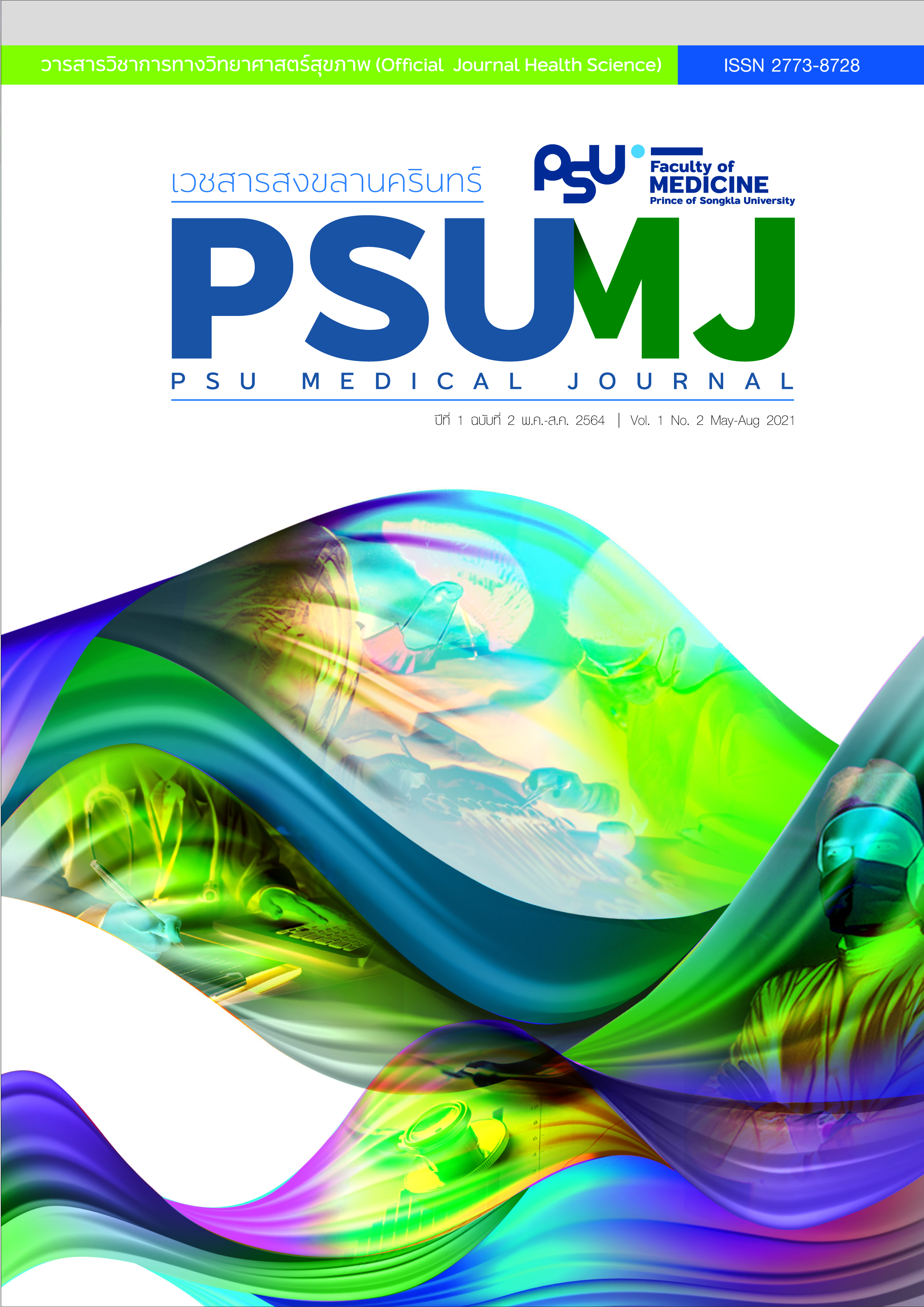Measuring Pain Intensity in Elderly Patients
Pain Measurement
DOI:
https://doi.org/10.31584/psumj.2021247735Keywords:
aging, elderly, geriatrics, older, pain measurement, pain measurement toolsAbstract
Pain intensity is considered as the fifth vital sign. However, it is the only vital sign which is subjective, with there being many pain measurement tools for adults to rate their level of pain. Additionally, there is an increasing number of aging populations throughout the world, and pain measurement in this group of people is challenging as geriatrics have both physical and cognitive impairment.
The most frequently utilized pain measurement tools are; the Visual Analogue Scale (VAS), Verbal Rating Scale (VRS), Numerical Rating Scale (NRS); and faces scales [Faces Pain Scale (FPS) and Faces Pain Scale-Revised (FPS-R) are the faces scales studied most often] tend to be valid for measuring pain severity in cognitively intact elderly. When problems arise, the VAS is the pain measurement tool found to have more difficulties (including higher rates of failure) than the other tools. In elderly with cognitive deficits, fewer difficulties tend to occur as the tools become simpler, with the most valid and useful tools in the following order: the FPS/FPS-R, the VRS, the 0-10 NRS, and the VAS. Furthermore, simpler pain measurement tools tend to be favored over more complicated tools. Keywords: aging; elderly; geriatrics; older; pain measurement; pain measurement tools
References
Ferreira-Valente MA, Pais-Ribeiro JL, Jensen MP. Validity of four pain intensity rating scales. Pain 2011;152:2399-404.
Jensen MP, Castarlenas E, Tomé-Pires C, de la Vega R, Sánchez-Rodríguez E, Miró J. The number of ratings needed for valid pain assessment in clinical trials: replication and extension. Pain Med 2015;16:1764-72.
Dworkin RH, Turk D, Farrar J, Haythornthwaite J, Jensen M, Katz N, et al. Core outcome measures for chronic pain clinical trials: IMMPACT recommendations. Pain 2005;113:9-19.
White C, Katz B. Australian and New Zealand Society for Geriatric Medicine position statement abstract: pain in older people. Australas J Ageing 2016;35:293.
Breivik H, Borchgrevink PC, Allen SM, Rosseland LA,Romundstad L, Breivik Hals EK, et al. Assessment of pain. Br J Anaesth 2008;101:17–24.
Jensen MP, Karoly P, Braver S. The measurement of clinical pain intensity: a comparison of six methods. Pain 1986:27:117-26.
Hjermstad MJ, Fayers PM, Haugen DF, Caraceni A, Hanks GW, Loge JH, et al. European palliative care research collaborative (EPCRC). Studies comparing Numerical Rating Scales, Verbal Rating Scales, and Visual Analogue Scales for assessment of pain intensity in adults: a systematic literature review. J Pain Symptom Manage 2011;41:1073-93.
Li L, Liu X, Herr K. Postoperative pain intensity assessment: a comparison of four scales in Chinese adults. Pain Med 2007;8:223-34.
Farrar JT, Young JP Jr, LaMoreaux L, Werth JL, Poole RM. Clinical importance of changes in chronic pain intensity measured on an 11-point numerical pain rating scale Pain 2001; 94:149-58.
Peters ML, Patijn J, Lamé I. Pain assessment in younger and older pain patients: psychometric properties and patient preference of five commonly used measures of pain intensity. Pain Med 2007;8:601-10.
Closs SJ, Barr B, Briggs M, Cash K, Seers K. A comparison of five pain assessment scales for nursing home residents with varying degrees of cognitive impairment. J Pain Symptom Manage 2004;27:196-205.
World Population Clock: 7.7 Billion People (2019)-Worldometers. [homepage on the Internet]. New York: United Nations Population Division; 2019 [cited 2019 July 28]. Available from: www.worl dometers.info
Aging Population. [homepage on the Internet]. Thousand Oaks CA: SAGE Publishing; [cited 2019 Jul 28]. Available from: https://journals.sagepub.com/aging
Bernabei R, Gambassi G, Lapane K, Landi F, Gatsonis C, Dunlop R, et al. Management of pain in elderly patients with cancer. SAGE Study Group. Systematic assessment of geriatric drug use via epidemiology. JAMA 1998;279:1877-82.
Bergh I, Sjöström B, Odén A, Steen B. An application of pain rating scales in geriatric patients. Aging Clin Exp Res 2000;12:380-7.
Herr KA, Spratt K, Mobily PR, Richardson G. Pain intensity assessment in older adults: use of experimental pain to compare psychometric properties and usability of selected pain scales with younger adults. Clin J Pain 2004;20:207-19.
Wynne CF, Ling SM, Remsburg R. Comparison of pain assessment instruments in cognitively intact and cognitively impaired nursing home residents. Geriatr Nurs 2000;21:20-23.
Zhou Y, Petpichetchian W, Kitrungrote L. Psychometric properties of pain intensity scales comparing among postoperative adult patients, elderly patients without and with mild cognitive impairment in China. Int J Nurs 2011;48:449-57.
Benesh LR, Szigeti E, Ferraro FR, Gullicks JN. Tools for assessing chronic pain in rural elderly women. Home Healthc Nurse 1997;15:207-11.
Herr K, Spratt KF, Garand L, Li L. Evaluation of the Iowa Pain Thermometer and other selected pain intensity scales in younger and older adult cohorts using controlled clinical pain: a preliminary study. Pain Med 2007;8:585-600.
Ware LJ, Epps CD, Herr K, Packard A. Evaluation of the revised faces pain scale, verbal descriptor scale, numerical rating scale, and Iowa pain thermometer in older minority adults. Pain Manag Nurs 2006;7:117-25.
Taylor LJ, Herr K. Pain intensity assessment: a comparison of selected pain intensity scales for use in cognitively intact and cognitively impaired African American older adults. Pain Manag Nurs 2003;4:87-95.
Taylor LJ, Harris J, Epps CD, Herr K. Psychometric evaluation of selected pain intensity scales for use with cognitively impaired and cognitively intact older adults. Rehab Nurs J 2005;30:55-61.
Miró J, Huguet A, Nieto R, Paredes S, Baos J. Evaluation of reliability, validity, and preference for a pain intensity scale for use with the elderly. J Pain 2005;6:727-35.
Kim EJ, Buschmann MBT. Reliability and validity of the Faces Pain Scale with older adults. Int J Nurs Stud 2006;43:447-56.
Gagliese L, Weizblit N, Ellis W, Chan VWS. The measurement of postoperative pain: a comparison of intensity scales in younger and older surgical patients. Pain 2005;117:412-20.








